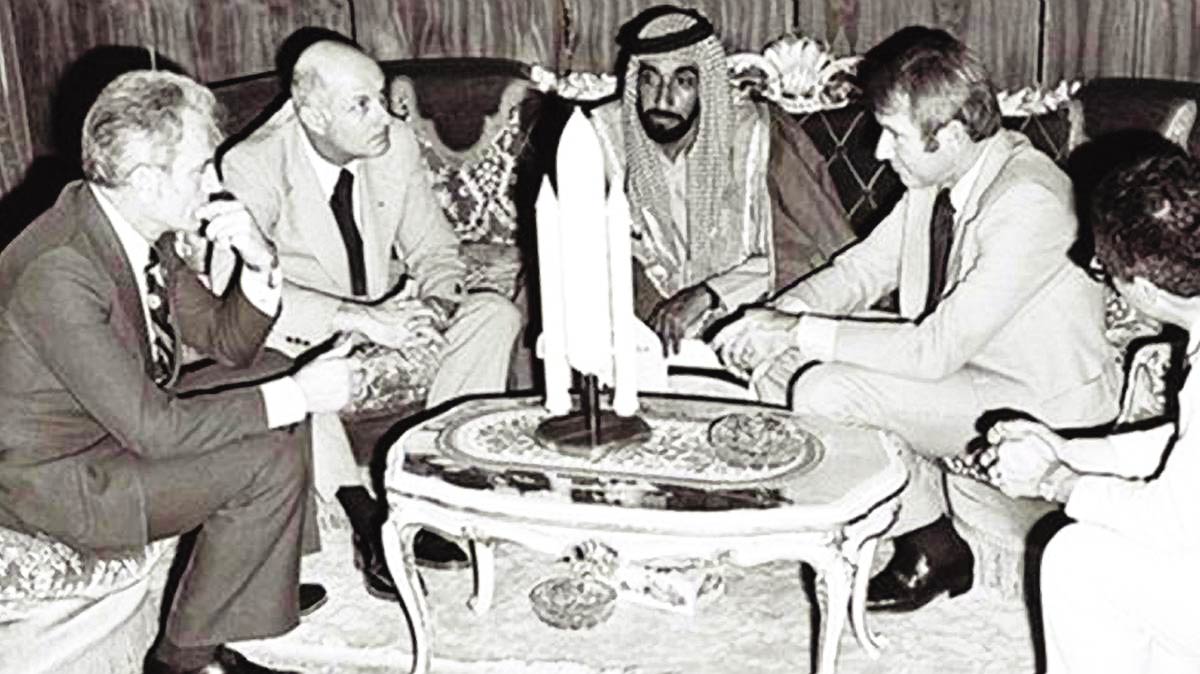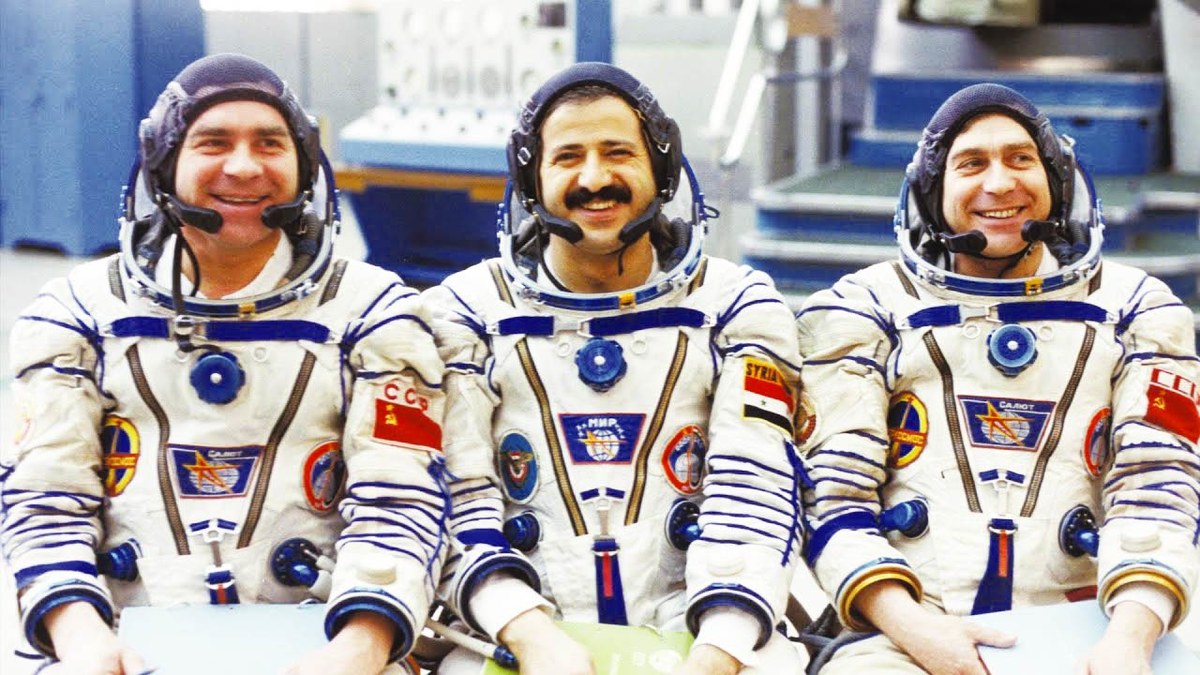Arab astronauts may not have set foot on the moon, but an Arab geographer left his mark on the Earth’s natural satellite as long ago as 1935.
A lunar impact crater 65 km in diameter was named AbulFeda by the International Astronomical Union (IAU) in honor of Isma’il Ibn Abu Al-Fida, a prince of the Ayyubid dynasty who lived between 1273 and 1331 in Syria.
The IAU was founded in 1919 to promote the science of astronomy and pay homage to major contributors in the field. AbulFeda is just one of 11 lunar craters named after luminaries from the golden age of Islamic civilization, which lasted from the mid-7th century to the 13th century.
In all, 24 lunar craters have been named after individuals from the region, including Abbas Ibn Firnas (810-887), an Andalusian inventor, physician, musician, engineer, humanitarian and poet — and the first man to fly. According to a 9th century poem, the so-called Leonardo da Vinci of the Muslim world “flew faster than the phoenix in his flight.”
Ibn Firnas was 65 when he became the world’s first hang-glider, jumping off the side of a mountain with feathers attached to his body and “touching the sky for a few minutes,” according to historical accounts.
Centuries later, in February, 1976, a meeting between the-then president of the UAE Sheikh Zayed bin Sultan Al-Nahyan and three US astronauts changed the course of a man’s life and fired the imagination of a young nation. A year earlier, the astronauts had taken part in the historic docking of an Apollo command/service module and a Soviet Soyuz 19 capsule as part of the first joint US–Soviet space flight.
A black-and-white photograph of the meeting, which can be seen at the operational air force squadron in Abu Dhabi, made a great impression on a young Emirati pilot, Hazza Al-Mansouri.

“I would look at the photo and imagine retaking it with three Emirati astronauts sitting with the founding father,” he said later.
Now 31-year-old Al-Mansouri, the UAE’s first astronaut, will also make history when he joins a mission to the International Space Station in September.
“It is a great honor to be represent the UAE in space, and to make my dream and the dream of a nation come true,” he told Arab News.
The astronaut plans to take personal items with him into space, including a seed of his country’s national tree, Al-Ghaf, and his traditional Emirati outfit.
The photograph of Sheikh Zayed and the US astronauts was not the only image that fired Al-Mansouri’s imagination. Inside his fourth-grade school book was a color photo of Prince Sultan bin Salman bin Abdul Aziz Al-Saud, the first Arab and royal to travel into space.
On June 17, 1985, Prince Sultan, a Saudi air force fighter pilot, lifted off from the Kennedy Space Center in Florida on board the space shuttle Discovery. During the seven-day mission, he helped to deploy a satellite for the Arab Satellite Communications Organization (Arabsat).

Prince Sultan became a hero and an icon across the region. “We have long reached the stars and beyond,” he said.
Two years later, on July 22, 1987, Muhammed Faris, a Syrian military aviator, became the first Syrian and the second Arab in space, carrying a vial of soil from Damascus on his journey from Earth.
Faris, who now lives in Turkey as a refugee, struck a responsive chord with many when he later told an interviewer: “When you go up there, you realize there are no borders, no countries, no nationalities. Just Earth. Mother Earth. We should protect this Earth. Who hurts their mother?”

The 1980s was a decade of expansion, exploration and transformation in the Middle East. Now, 30 years later, that energy has returned.
As the third Arab country (after Saudi Arabia and Syria) to send a man into space, the UAE has a special relationship with space and the moon.
In a corner of the Al-Ain national museum is “a piece of the moon” gifted to Sheikh Zayed by the three US astronauts.
“This fragment is a portion of a rock from the Valley of Taurus-Littrow. It is given as a symbol of the unity of human endeavor and carries with it the hope of the American people for a world at peace,” says the plaque describing the object.
Next to it, is a small, well-traveled UAE flag.
“This flag of your nation was carried to the moon aboard spacecraft America during the Apollo XVII mission, Dec. 7 to 19, 1972. Presented to the people of the UAE from the people of the United States of America, Richard Nixon 1973.”
As the world celebrates the 50th anniversary of the Apollo moon landing, the UAE is looking forward to the launch of Al-Amal, or Hope, in 2021 to mark the 50th anniversary of the country’s foundation. The spacecraft will orbit Mars, which has an area of contrasting brightness and darkness that was named Arabia Terra in 1979 for its resemblance to the Arabian Peninsula.
“The moon landing was a pivotal moment in human history,” Salem Humaid Al-Marri, assistant director general for science and technology at the Mohammed Bin Rashid Space Center, told Arab News.
“It was when something we imagined became a reality, and humanity left this planet. It was the result of science, engineering, mathematics and imagination coming together.”
“Space makes people dream the impossible,” said Al-Marri.
The words uttered by Neil Armstrong when he became the first man to step on to the lunar surface, on July 20, 1969 — “That’s one small step for man, one giant leap for mankind” — have become part of history.
“It was such a powerful statement that influenced so many who watched the original landing as well as those from the current generation who watched it on the Internet or TV,” said Al-Marri. “There isn’t anyone who hasn’t see the moon landing somewhere.”
The space era began as a “race” between the superpowers that helped to break new ground.
“The race pushed space industry development to new levels. While it was driven by military involvement, the benefits from the technological advances were for all people,” said Al-Marri. “We have better satellites, as well as a better understanding of our planet and the world around it, as a result.”
However, after the 1969 moon landing, strained budgets and depleted resources forced the space industry to abandon competition and embrace cooperation.
“Space today is all about cooperating to reach new heights. If you want to fly into space now, you have to do so on a Russian spacecraft as the Americans retired their shuttles in 2011,” Al-Marri said.
Al-Mansouri will head into space together with a US and a Russian astronaut, symbolizing a new era of Arab participation in space exploration.
“The UAE is working with the Saudi space program, as well as with others such as Algeria, Egypt, Kuwait and Bahrain, to boost the Arab presence in the space industry,” said Al-Marri.
“Space is bringing Arab nations together.”
In the broad sweep of history, these space programs are building on the contributions of the Islamic civilization that shaped the modern world — and honoring the memory of scientists and explorers such as Abu Al-Fida and Ibn Firnas.




























